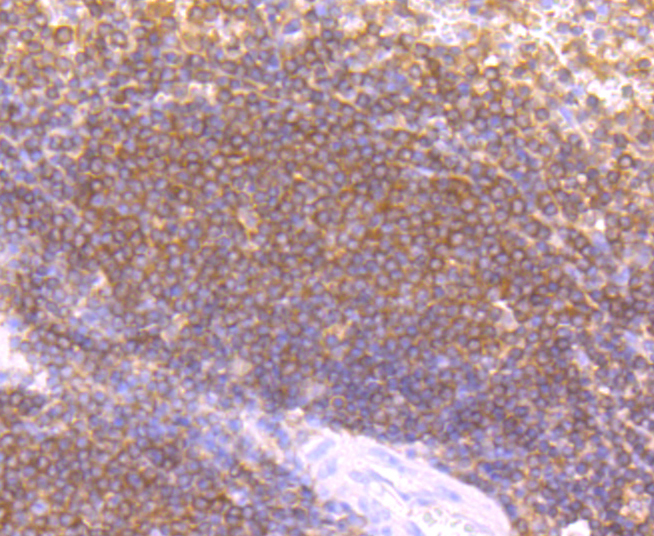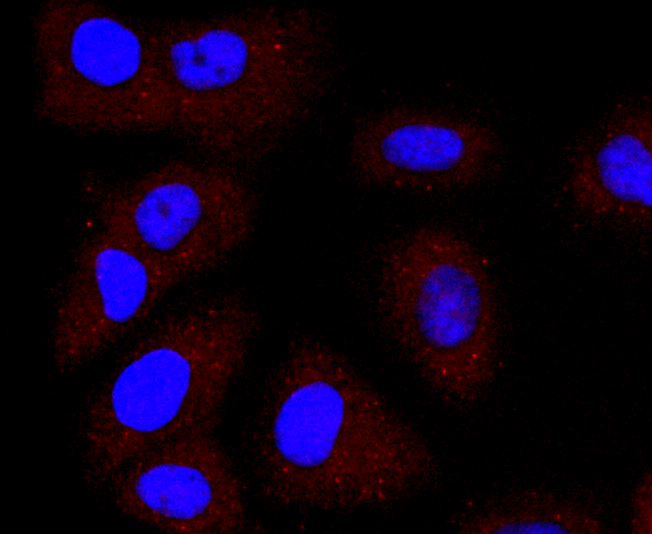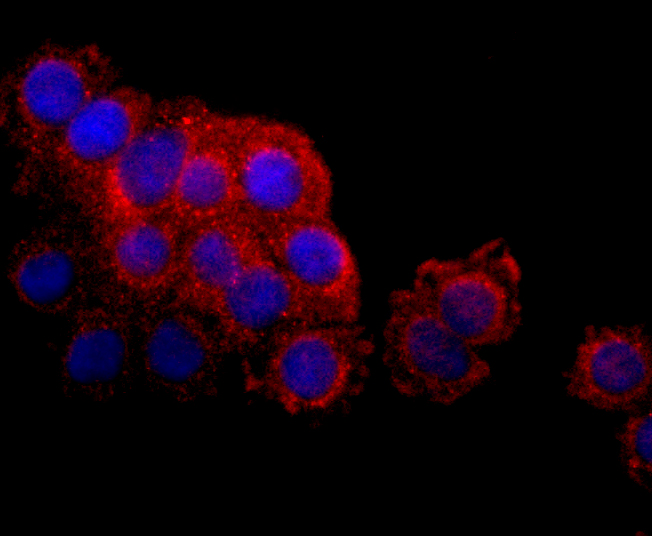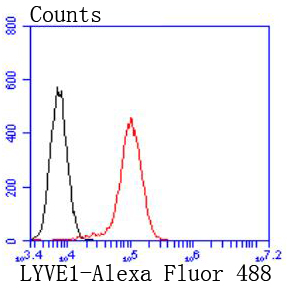Lymphatic vessel endothelial hyaluronan receptor-1 (LYVE-1) is expressed on the cell surface as a protein that is reduced by glycosidase treatment. LYVE-1 is abundant in spleen, lymph node, heart, lung and fetal liver, and is less abundant in appendix, bone marrow, placenta, muscle and adult liver. Expression of LYVE-1 is largely restricted to endothelial cells lining lymphatic vessels and splenic sinusoidal endothelial cells. LYVE-1 binds to both soluble and immobilized hyaluronan (HA) with greater specificity than HCAM. Like HCAM, the LYVE-1 molecule binds both soluble and immobilized HA. However, unlike HCAM, the LYVE-1 molecule co-localizes with HA on the luminal face of the lymph vessel wall and is completely absent from blood vessels. Hence, LYVE-1 is the first lymph-specific HA receptor to be characterized and is a uniquely powerful marker for lymph vessels themselves. LYVE-1 is used as a marker to study tumor lymphangiogenesis, which is an important area of investigation.






